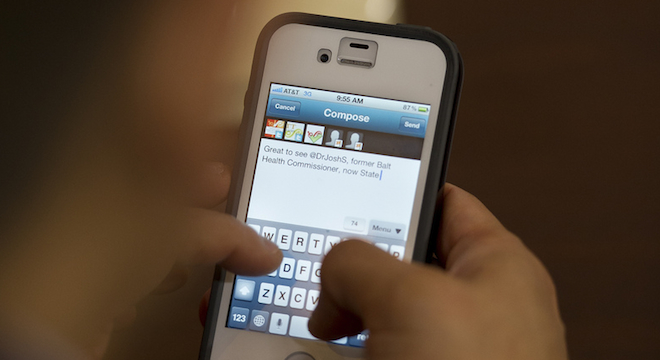Twitter has removed the ability to see exactly which type of device or service a user posts their tweets from — such as the official Twitter app for iPhone or unofficial app Tweetbot — as The Next Web first observed on Monday.
This information was previously displayed at the bottom of an individual tweet, immediately following the tweet’s timestamp, indicated by the word “via,” which is why some users referred to it as a “via tag.”
A Twitter spokesperson confirmed in a statement to TPM on Tuesday that the company had already previously removed this bit of information from tweets appearing on Twitter’s mobile apps and mobile website, but had only recently expanded the removal to the desktop website version of Twitter.
As Twitter’s spokesperson put it: “This is new on web and was already the case on mobile. This is part of our ongoing work to simplify Tweets and emphasize the content being shared.”
However, as Twitter grows in popularity and becomes more of a source of breaking news, the move could make it harder for journalists and others to track down vital information about Twitter users. The Twitter “via tags,” played an important role in uncovering the Anthony Weiner “sext” scandal, for example, when reporters reviewed his tweets to understand where they had been posted from and by whom.
The removal of the “via tags” comes just a few days after Twitter abruptly cut off the ability for users of the popular blogging website Tumblr to use that website to connect to their Twitter accounts and search for Twitter contacts also using Tumblr.
Twitter hasn’t explicitly explained why it revoked Tumblr’s access to Twitter user contact lists, instead recycling a statement it gave in late July after it also blocked contact list access to Instagram, the popular photo-sharing smartphone app acquired by Facebook for $1 billion.
At the time, Twitter said: “We understand that there’s great value associated with Twitter’s follow graph data, and we can confirm that it is no longer available within Instagram.”
“We don’t have anything to share beyond that,” Twitter’s spokesperson told TPM.
Meanwhile, another unofficial Twitter app for Apple devices, Tweetbot, announced that it had been forced to pull a new version of its app for Mac computers due to the fact that Twitter was limiting access to the number of user “tokens,” or user permissions that it hands out to third-party apps allowing them to pull Twitter data.
“We wish we could continue on but we didn’t make the rules, we just have to live within them,” Tweetbot’s creators wrote in an official blog post on Monday.
The changes appear to be part of Twitter’s new, stricter rules for developers, first announced in late June. As Twitter’s director of consumer product Michael Sippey wrote in a blog post at the time, Twitter made the changes to provide “the core Twitter consumption experience through a consistent set of products and tools.”
However, the stricter rules have sparked fears among developers of third-party apps — that is, unofficial apps for accessing Twitter data — that their products could be limited or ruined outright. The stricter rules come in stark contrast to Twitter’s previously permissive policy of granting developers broad access to its application programming interface — the code which can be used to write apps to interact with Twitter and retrieve tweets and other user information.
Twitter has also pushed its signature medium, the individual tweet, much further beyond its original 140 character limit, expanding tweets to include summaries of news articles, photos and playable videos originally posted on and hosted by other websites such as The New York Times and Buzzfeed.
The company recently openly stated its intention to become a full fledged media company and sell more online and mobile advertisements. Creating a more “consistent” Twitter experience and getting more users to visit the official Twitter website and apps instead of third-party clients is clearly one method of pursuing these goals.
But the backlash among third party developers has grown to the point that several prominent names are pursuing alternative realtime communciations networks, including one called App.net, that requires a subscription fee but says it won’t ever sell advertisements.






